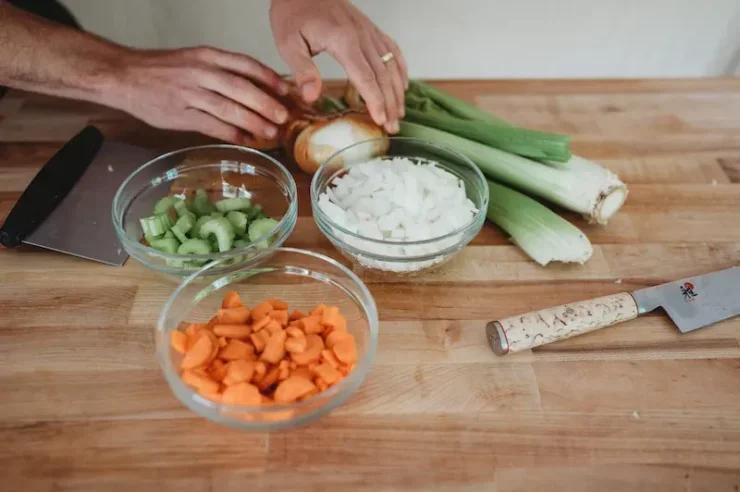Mise en place was one of the first concepts I was taught in culinary school. And, it’s one of the few things that’s remained consistent in every professional kitchen I’ve worked.
Sure, mise en place includes the ingredients that you cook with, but it’s also an important approach to cooking in general.
After over a decade of practicing mise en place in restaurants, the concept naturally made its way into my daily cooking tasks at home. Today I’ll share what mise en place is, and how a little practice and discipline can have a huge impact on making you a better, or at least more organized cook.
In This Article
What Is Mise En Place?
Mise En Place (pronounced: meez-on plahs) is all about preparation and organization. It’s a French term that translates to “everything in its place”.
When it comes to cooking, “everything” means anything that you will need to prepare a specific recipe. That includes all of the ingredients as well as any equipment and utensils you may need.
If you’ve ever watched a cooking program on TV then you’ve probably seen mise en place in action. In many cases, there is little to no cutting and chopping that happens on screen. Instead, everything has already been prepped and neatly placed in small dishes, ready to hit the pan.
And while there may be a little TV “magic” going on, good mise en place makes the cooking process fast and organized, and clean-up is a breeze.
Having all of your equipment in place is just as important as the ingredients themselves. Having to search for the right spatula or strainer can quickly throw a wrench into things if you’re not prepared.
Mise En Place In A Restaurant vs. Home Kitchen
Professional kitchens are prepared to make a tremendous variety of dishes every night, and typically at a high volume of each dish. Obviously, this is not what is happening in most home kitchens.
At home, the chef is usually focused on creating a small number of recipes and only a few mouths to feed. But, the biggest difference between mise en place in a restaurant vs. a home kitchen, is actually that the pros need to be able to cook and finish dishes much, much faster.
In order to accomplish this, each cook is usually responsible for a list of specific dishes and ingredients. So hopefully, by the time the kitchen is open for service, each cook has completed their mise en place list and it’s smooth sailing from there.
Mise en place lists cover simple things like minced garlic that’s ready to go, or meat that’s portioned and ready to hit the grill.
But, it also covers more involved items like intricate sauces, or blanching and cooling vegetables. Prep items that actually involve cooking and even their own recipes.
(A peek behind the scenes: the prep list for one station)
At home, you’re usually only preparing one meal or recipe at a time. So your mise en place should take care of all of your knife work and measurements, but probably won’t involve much or any cooking.
The prep time in a kitchen is really where the heavy lifting happens and accounts for about 75% of the work. At home, I’m always shocked that I can spend several hours preparing a meal, for it to be gobbled up in a matter of minutes.
So, while restaurants use mise en place on a larger and sometimes more extreme scale, it’s not much different than at home. The bottom line is that preparation makes cooking faster, cleaner, and easier.
How To Start Using Mise En Place At Home
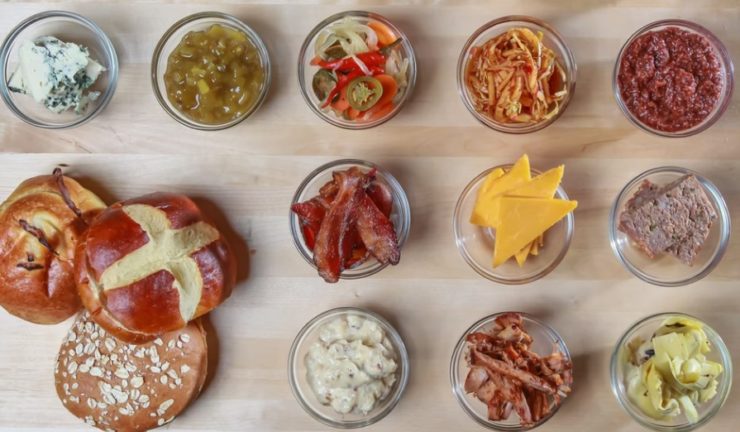
Practicing good mise en place at home isn’t difficult, but it takes some discipline. Especially since you (hopefully) don’t have anyone yelling at you if your station isn’t set up on time.
So, here are some simple steps that will help you on the path to a cleaner and more organized way to cook.
1. Have A Plan
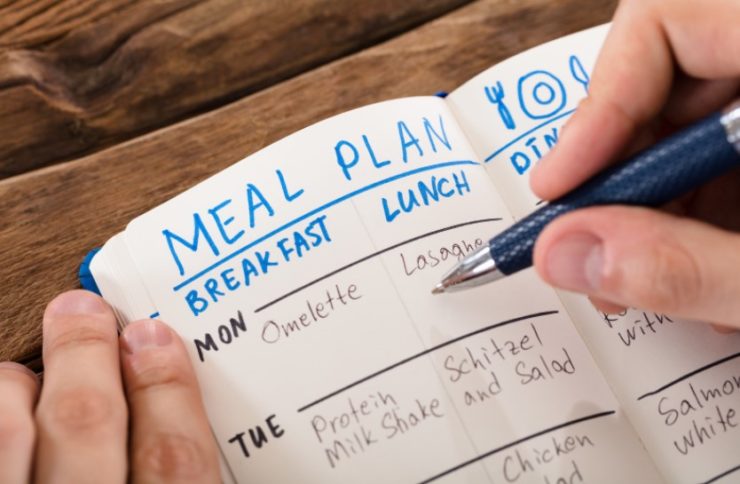
This is all about being prepared mentally before you even start gathering and chopping ingredients.
First and foremost, read through any recipe that you’re using, from start to finish. That way there won’t be any surprises along the way, and you can take note of exactly what ingredients and what tools you’ll need to get the job done.
For a professional, that would mean writing a prep list the night before, so you know what’s ahead and you can get started as soon as you enter the kitchen.
In my most demanding cooking role, my daily prep list included a detailed schedule down to the minute. 5 minutes to brunoise 1-pint of shallots, 20 minutes to break down fish, 5 minutes to supreme citrus, etc.
Now that’s a little extreme, but it can be incredibly helpful to get things out of your mind and on to paper, especially when you’re just getting started.
If you haven’t done this before, it’s less complicated than you might think. You can get started quickly with our Beginners Guide To Meal Planning.
2. Set Up Your Station
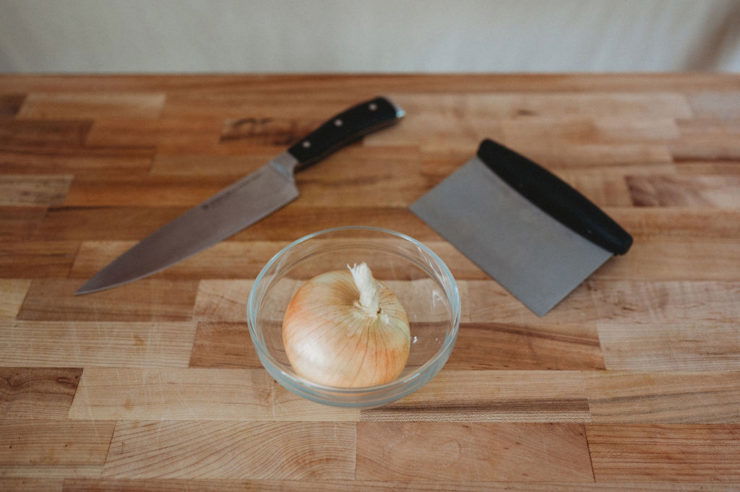
Now that you have a game plan, and maybe even a list of everything you’ll need, it’s time to get set up for action.
Gather any pots, pans, lids, strainers, knives, spoons, prep containers, and anything else you’ll need for the recipe you’re making. Then, place them in the general area where they’ll be used. If you’re working in tight quarters, stack and nest things in the order that they will be needed.
This step allows you to stay put while you’re slicing, dicing, and mixing. That way you’re not running back and forth searching for containers, graters, and anything else you need while you prep.
3. Go Shopping

Take your list and start gathering everything you’ll need from your fridge and pantry. Since you planned ahead (right?), you should have all the ingredients that you need. If you’re working with very perishable items and meat, leave those in the fridge and deal with them last.
Bring everything to your station and make sure it’s ready to use. That means, wash anything that needs washing, open cans, and jars and get rid of any unnecessary packages and trash. Try to keep things clutter-free at every step.
4. Peel, Cut, Portion
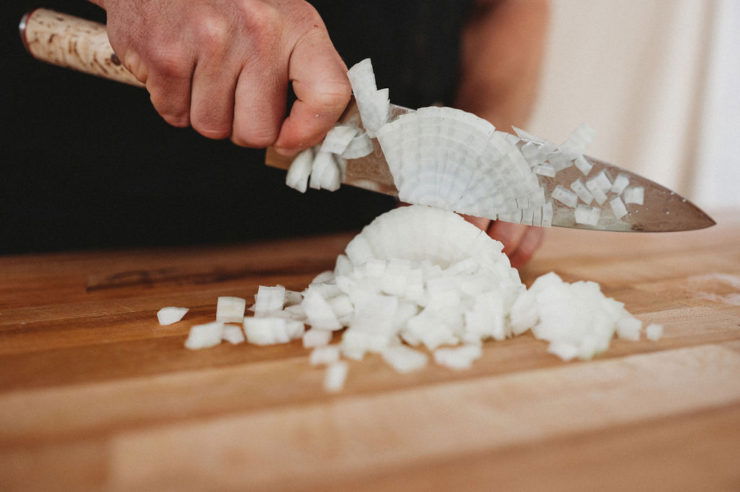
Ok, you can FINALLY take out your knives and put them to use. This is the step where you get everything ready to hit the pan. Peel and cut vegetables, and measure any sauces and seasonings.
This is also where your mise en place will start to take physical form. As you cut and measure, place each item in an appropriately sized container. That could be cute, Instagramable ramekins, or a mish-mash of whatever bowls and take-out containers you have lying around.
If you’ll be cooking right away, arrange everything close to the stove in a line or grid in the order that it’ll be used in the recipe. If you’re prepping well ahead of time (bravo!), place all of your mise en place on a tray that you can easily move to and from your fridge in one fell swoop.
Before you move on, clean up your station. Put away extra ingredients and containers, and take a moment to clean up any dishes or messes that you’ve made.
5. Cook, Stack, Clean
And now for the fun part.
Your equipment is ready and in place, and your ingredients are all within arms reach. Cooking through your recipe at this point should be a piece of cake.
And, since you don’t have to worry about chopping and measuring, you can seriously focus on technique, or just relax and drink a glass of wine as you go. I try to do both.
As you use each ingredient, neatly stack and nest the empty containers as soon as you use them. This should leave you with a nice and neat pile to clean up at the end or if you have some extra time between cooking steps.
Taking You’re Mise En Place To The Next Level
Once you’re comfortable with the basics, you can start thinking and prepping like a pro. This will allow you to make multi-course meals and large gatherings easy…er, easier.
Again, the most important thing here is to have a plan. But, instead of a simple recipe and equipment list, you’ll want to make a prep list that may cover multiple days leading up to the meal. This will help break up tasks so you’re not overloaded on one particular day.
A few days ahead of time you might make a batch of chicken or vegetable stock and brine your protein. The day before you might make all of your sauces and dressings. Day of might included veg and herb prep before the real cooking begins.
It sounds like a lot of work (and it is), but having the tasks spread out and actually written down makes it much more approachable and less overwhelming.
Next time you’re in charge of hosting a large holiday meal, try using this approach. On the big day, you’ll look (and feel) like a hero and be able to enjoy the day rather than running around like a maniac.
Breaking The Rules
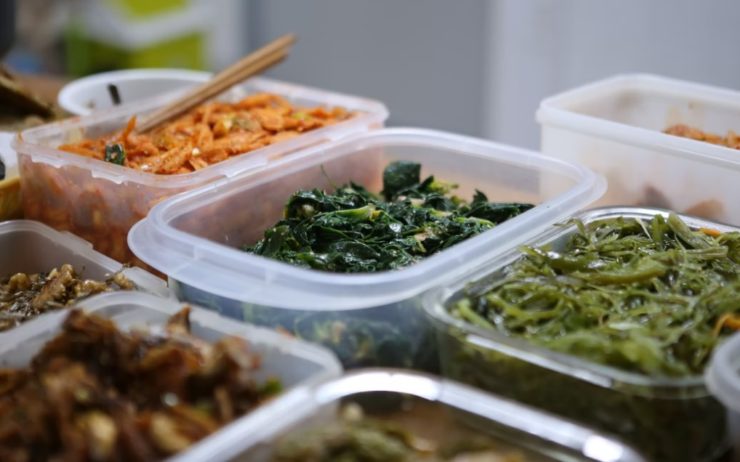
Planning and preparation before cooking is the key to good mise en place. But, there are some cases where it might be worth breaking or at least bending the rules.
This can be especially useful when you’re dealing with cooking techniques that take a long time. For instance, if one dish calls for a large amount of dark, caramelized onions, that could mean 30 minutes or more of cooking time.
While it can be nice to have some downtime while you’re cooking, you could also use that time to get a lot of mise en place done.
This is why Step 1: Having A Plan is so important. If you’ve familiarized yourself with a recipe and you know you’ll have a lot of time between cooking steps, use that time to get the rest of your mise en place together, or work on another recipe.
Using mise en place is great, and I do think it can make you a better cook. But, it’s also ok to completely throw it out the window on some occasions.
I almost can’t function when I’m cooking and my station is disorganized. But following strict rules and guidelines, all the time can make you feel like a robot. So, every once in a while, especially when surrounded by friends and family, it’s nice to let go.
Every once in a while cook with reckless abandon and let your instincts lead the way.
